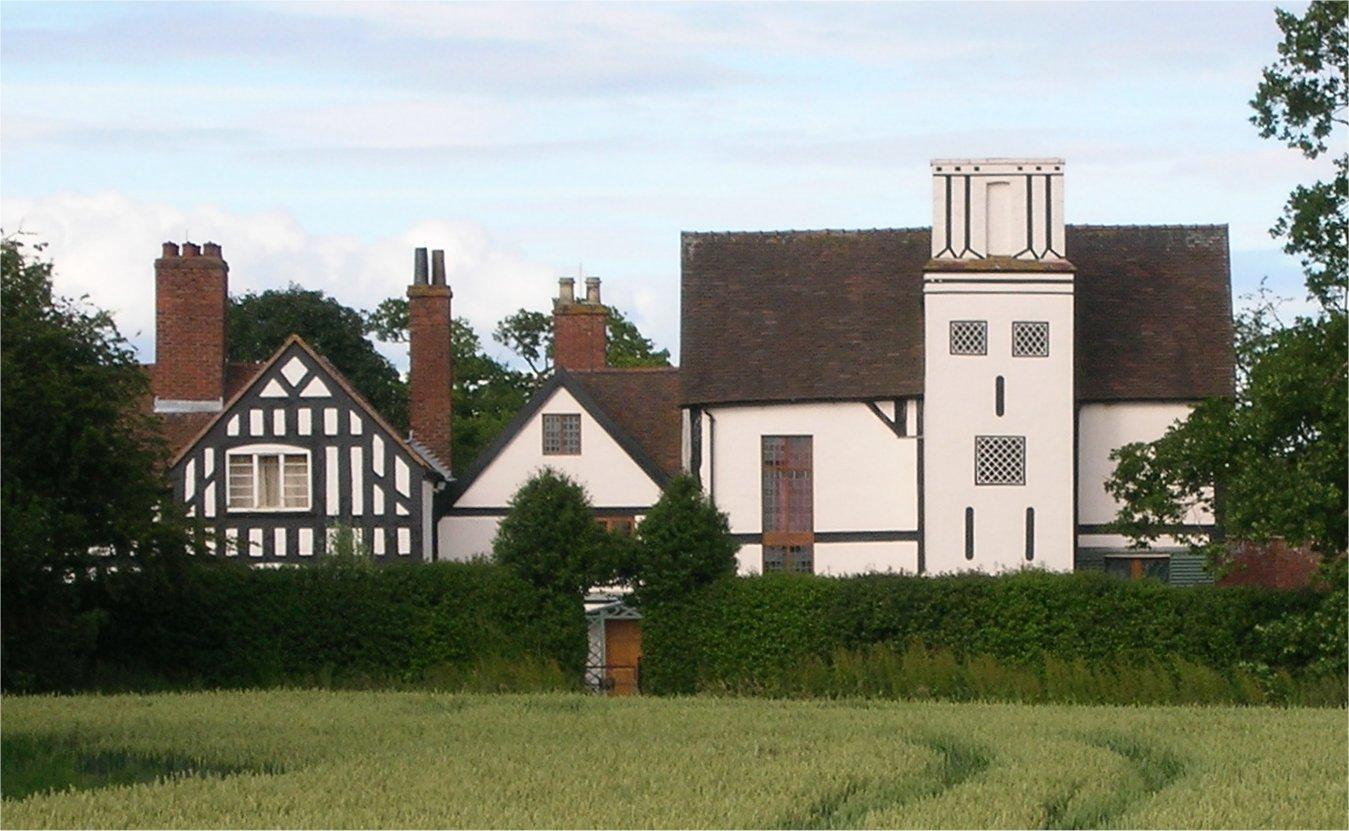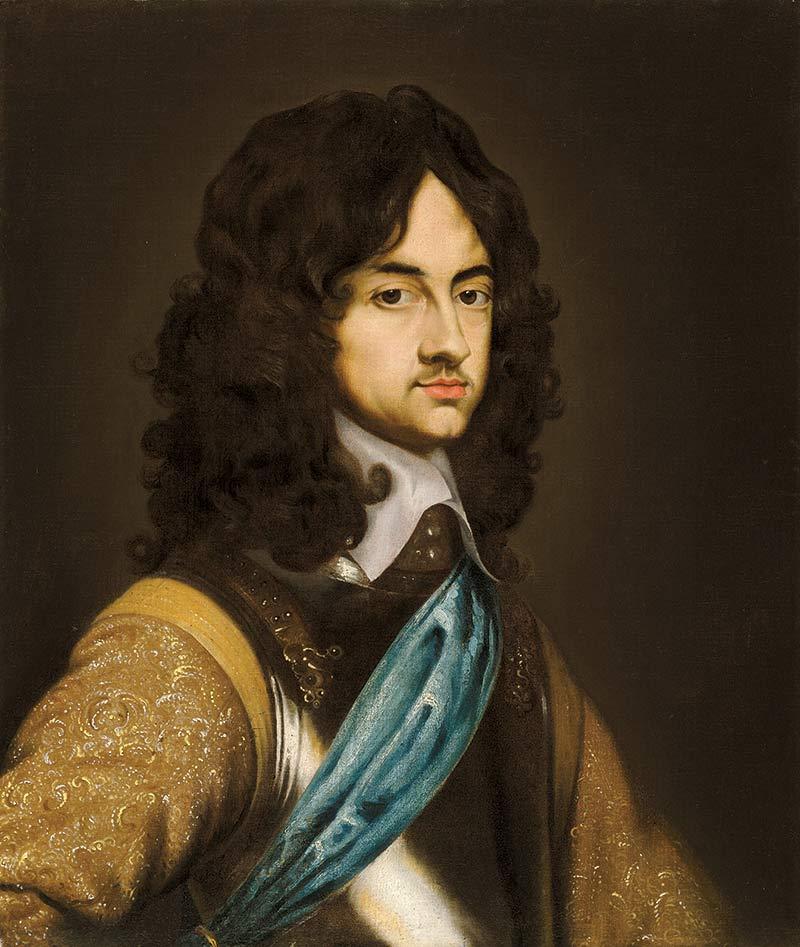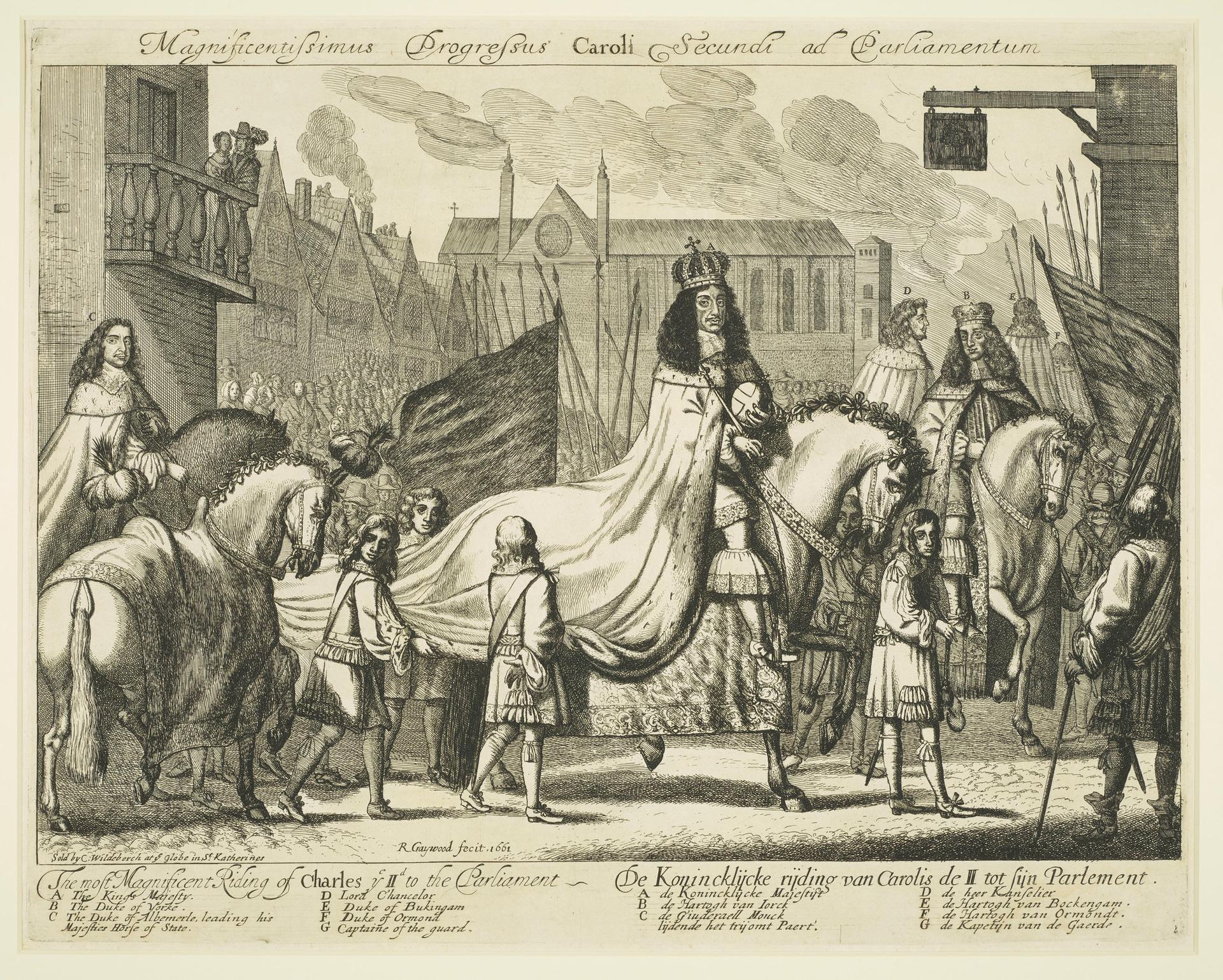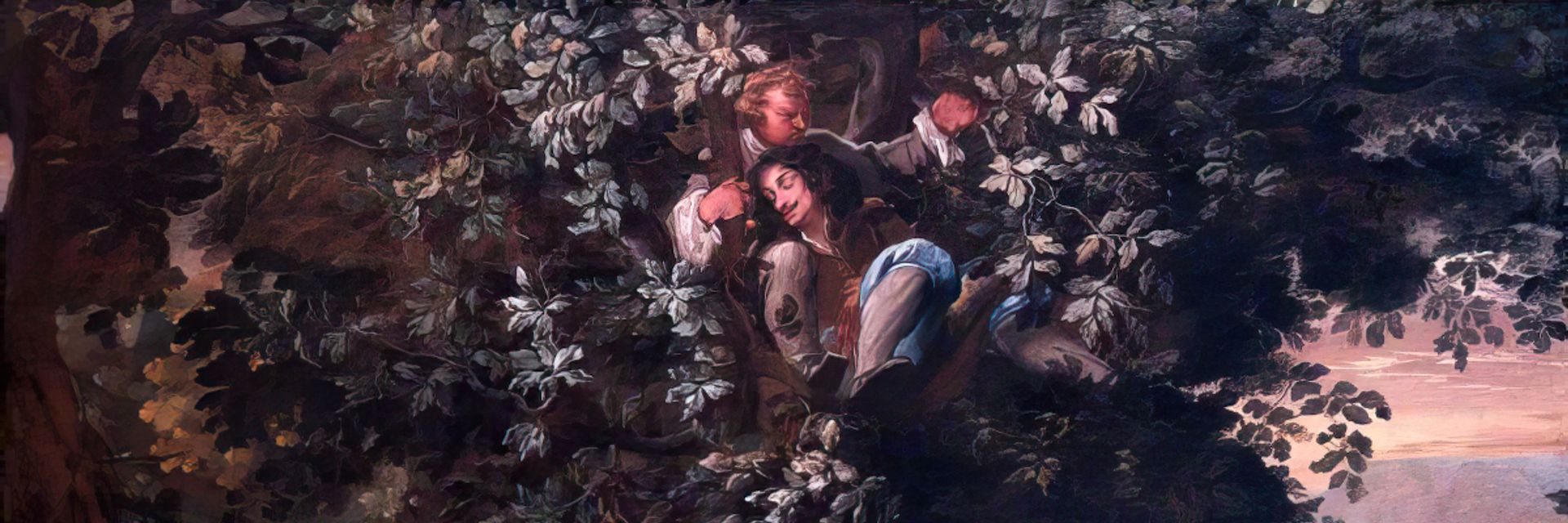After the defeat of his army at the Battle of Worcester, young Charles Stuart, the Prince of Wales, was forced to flee the victorious troops of Oliver Cromwell, the man who ordered the execution of the prince’s father, Charles I, two years earlier. Now a fugitive with an astronomical price on his head, facing certain execution, Charles had to find a way out of the country. With the help of a few loyal aides, and relying on an underground network among oppressed Catholic families, Charles, after many close calls, reached France. His gratitude for the kindness of the common people, who helped him at great risk to their lives, would make him one of the most loved of England’s kings.
◊
As darkness fell on the Worcester battlefield, where the Commonwealth army of Oliver Cromwell routed the Royalist troops of Charles Stuart, Prince of Wales, the young would-be-king fled north with a handful of aides. Their destination was the dense forest of Brewood, and a remote manor house, romantically named Boscobel, nestled there.
Two years earlier, in 1649, the prince’s father, Charles I, was beheaded by Cromwell’s revolutionary government. Exiled in France since then, the 23-year-old heir to the throne remained the primary focus for the network of monarchists seeking to restore him as the rightful king of England. Charles landed in Scotland to lead a Royalist army south, but the campaign failed miserably. Cromwell, a brilliant general with crack troops, made quick work of the invaders.
Charles had shown great courage in the battle and quit the field only after his attendants convinced him that the royalist cause needed a living king more than a dead hero. And so began one of the most remarkable adventures in English history.
For the next five weeks Charles was a fugitive facing certain execution, with the colossal price of £1,000 on his head (roughly US$385,000 today), before finally escaping to the continent. His experiences as a hunted man became the stuff of folktales, and also contributed greatly to the personality, and eventual rule, of King Charles II. Because the prince returned in glory a decade later. Crowned king in 1661, for the next quarter century he ruled a fractious nation slowly entering the modern age.
The execution of Charles I, the rule of Oliver Cromwell, and the return of Charles II are featured in episode 11 and episode 12 of the MagellanTV series, Monarchy.
According to historian Antonia Fraser, in later years Charles never tired of relating his “History of Wonders.” His version of the story was written down on three separate occasions, while most persons of note who helped him escape later recorded their own accounts. What follows, then, is fairly well documented.
Finding Refuge with an Oppressed Minority
Charles’ destination that fateful night, Boscobel House, was home to a Catholic family, part of an underground network that had long shielded fugitive priests. Catholics had been a despised and persecuted minority for over a century, since Henry VIII established the Church of England. Catholic churches were closed, monasteries disbanded, and any priest who maintained allegiance to the pope over the king, or queen, was subject to imprisonment and gruesome execution.

Boscobel House in 2007. (Image Credit: Wikipedia)
Still the faith persisted, mainly among aristocratic families in remote locales like the Brewood Forest, visited by fugitive priests who lived and said Mass in hidden rooms behind secret doors. That Charles found refuge in this underground Catholic network not only saved the nominal head of the Church of England but also had tremendous consequences later in his life.
Upon Charles’s arrival, Boscobel’s owner directed the royal party to an even more remote house 15 miles distant. There the young heir was transformed from prince to peasant. His long, curly black hair was cropped short, and, assuming the name of Jones, he exchanged his military finery for the rough clothes of a woodsman.
But a problem remained. Charles stood 6’2'', towering above the average height of his subjects. Though there were no pictures of him in circulation, Army cadres in pursuit of fleeing Scottish troops were on the lookout for a very tall, black-haired man. “Jones” would be in danger whenever he appeared among strangers in his overland bid to flee England.

Charles a year before his “History of Wonders.”
(Copy of a lost original by the Dutch painter Adriaen Hanneman. Image credit: Ashmolean Museum)
Charles’s First Escape Attempt Fails
The royal party decided to separate. Charles and a local guide headed west to nearby Wales to find a ship. Two days later, after hiding from soldiers and sleeping in barns, the two were back at Boscobel. There were too many troops at the Welsh border crossings and, in an attempt to swim the swift River Severn that divided the two countries, Charles had to save his companion from drowning.
By now, the Commonwealth government had posted an enormous reward for his capture, and squadrons were searching every rural hamlet and home. Too dangerous indoors, Charles and his aide retired to the woods surrounding the house, climbing up into the full branches of a large oak. There they watched soldiers searching the surrounding countryside, some coming close enough for Charles to hear talk of what they intended to do with him if he were captured.
Charles’s oak tree refuge later became a symbol of his monarchy, and an aged descendent of “The Royal Oak” still draws history buffs to the spot.
No house was safe for long, and Charles moved to another Catholic home where he slept in a tiny attic hideaway. Both of the houses where he had stayed earlier were searched, and Charles was passed to another manor where one more change of clothing turned him into “Will Jackson,” a house servant to the Lane family residing there.
It was now critical to leave the area. Jane Lane had been granted a government pass to visit a pregnant friend near the port of Bristol, a three-day journey. It was decided that Charles would travel in her entourage, posing as a servant who helped prepare meals. At one memorable stop along the way, he even took a horse to an anti-monarchist blacksmith for a new shoe.
Charles is Recognized, and Other Narrow Escapes
No ship was available in Bristol, or nearby Lyme, and so the Lane party set out again for Boscobel. On the way, they left Charles at Trent Manor, the home of Francis Wyndham, a royalist colonel. By now, Charles had been recognized twice: A servant of Lane’s friend had served in Charles I’s army, and the captain of the Lyme ship guessed the prince’s identity. Both pledged their silence.
Two more attempts were made to take ship to France. In nicer clothes, Charles now pretended to be a gentleman wishing to elope, with Col. Wyndham’s niece playing his fiancée. These also ended in failure. Returning to Trent after the second attempt, Charles and an aide stopped at an inn that was subsequently commandeered by a troop of 40 Commonwealth soldiers. Early the next morning, the entire company providentially distracted by a woman giving birth, the two slipped away.
Charles stayed at Trent Manor for nearly two weeks before moving to another home on the Sussex coast near Stonehenge. He spent a day there, he recalled, “looking upon the stones for some time.” A week later, two aides were able to hire, for £80, a coal boat that regularly traded between Brighton, then a small fishing village, and the French coast. On October 13, Charles and three attendants set out to meet the boat. On the way, they had to ride through another troop of Cromwell’s cavalry. This time the soldiers seemed to ride after them only to gallop on past the relieved fugitives. One more near miss.
Another scare lay in store. Meeting the boat’s captain at an inn, the man recognized Charles and furiously demanded another £200 for the danger they had put him in. As if that wasn’t bad enough, the innkeeper, having served at the court of Charles I, also saw through the prince’s disguise. “The fellow knows me, and I him,” Charles told an aide. “I hope he is an honest fellow.”
Indeed, in the five weeks of Charles’s flight some 60 people are believed to have known his identity and at least something of his whereabouts. That he wasn’t betrayed for the stupendous bounty on his head says a lot about the loyalty and affection he commanded.
Just after midnight on October 15, Charles and an aide boarded the coal boat, which slipped out at high tide hours later. Arriving in France the next day, Charles would spend the following nine years drifting between the court of his first cousin, Louis XIV, and the Netherlands, where his sister Mary was married to the Prince of Orange. He was essentially homeless, and for long periods mainly penniless, a political inconvenience to his putative protectors.
The Return of the King
The Puritan attempt to turn England into a republic eventually foundered. Cromwell assumed monarchical powers after suspending Parliament. But the English people rejected religious edicts that enforced days of fasting and prayer, and which banned anything resembling fun; theaters, pubs, brothels, and festive holidays, especially the 12 days of Christmas.
Cromwell, who took the title Lord Protector in lieu of being crowned king, died in 1658. Two fractious years later, the Army, under the command of a former royalist, William Monck, welcomed Charles back. The celebrations at his return were enthusiastic and widespread.

A contemporary engraving showing Charles’s processional return to London. (Image Credit: Royal Collection Trust)
Assuming the throne, Charles II lavished rewards on those who sheltered him a decade before. He granted dukedoms to his aristocratic aides, and gave jewels and generous perpetual annuities to commoners. In a few cases, where direct family descendents survive, Charles’s grants are still paid.
He also tried to reward those loyal Catholics who aided him by easing long-standing restrictions to their rights. Though achieving marginal tolerance for both Catholics and Jews, he was eventually frustrated by a staunchly Protestant Parliament that grew increasingly suspicious of their ruler. Charles was, after all, the son of a French Catholic princess and had married the Catholic daughter of Portugal’s king. Mass was held daily in her court chapel.
Further complicating matters was the conversion to Catholicism of Charles’s brother James, who would ascend the throne, there being no legitimate male heir. Though Charles swore loyalty to the English church, occasionally violent anti-Catholic politics prevailed through his quarter-century reign.
Charles fathered 14 illegitimate children with seven mistresses. A doting dad, he acknowledging them all, and granted titles to the 12 surviving offspring. Today, a statistically significant percentage of British aristocrats can trace their lineage to one or another of the king’s love children.
Through it all, his popularity waxed and waned, and the court was notorious for its lavish spending – and crushing debts. Perhaps to make up for the days spent hiding in tiny rooms, Charles loved to race yachts, and what’s today called power walking. Setting out daily in St. James Park without bodyguards and trailed by courtiers, Charles was pleased to meet and speak to any of his subjects he met along the way.
Charles also patronized the new, science-focused Royal Society, and kept his own chemistry lab. He professionalized the Royal Navy, and promoted the rebuilding of London after the Great Fire of 1666.
Charles II died at 54, after a life characterized by as much privation as opulence. On his deathbed, at the urging of his brother, he asked to see a Catholic priest. By an astounding coincidence, the man found for that solemn occasion was Father John Huddleston, whom Charles first met at Boscobel. He was delighted to see him again. “You that saved my body,” he said, “have now come to save my soul.” His conversion completed, and last rights given, he died the following day.
Charles II was the last absolute king of England but nevertheless had a genuinely affable, down-to-earth personality. This was in stark contrast to the imperious tradition of every preceding English ruler, particularly his father, as well as to the benign, remote monarchs who followed. All in all, old Charlie was a bit of alright.
Ω
Title Image: A fanciful rendering of Charles in the Royal Oak by Isaac Fuller. (Credit: National Portrait Gallery)

